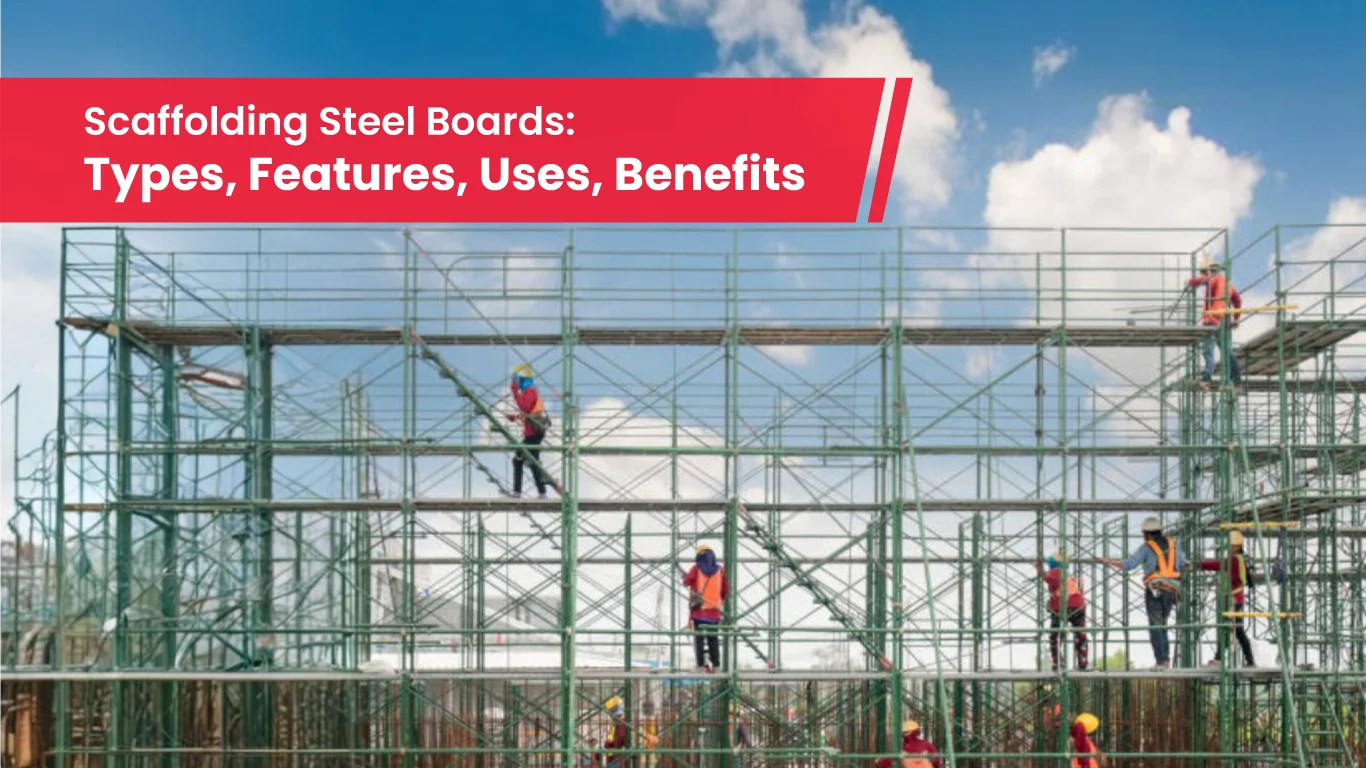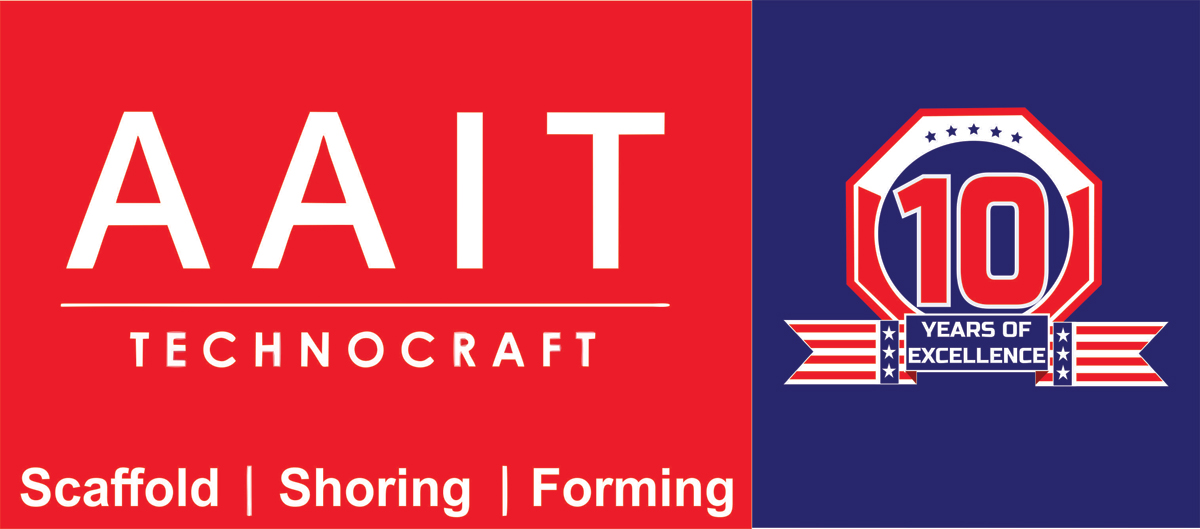
Whenever you’re managing a construction project, many scaffold components can be useful. As workers erect the structure, they can also place scaffolding steel boards. These provide a surface on which people can stand. Furthermore, the design of these boards incorporates pre- galvanized steel, ensuring their durability. Designed with OSHA standards in mind, these boards offer numerous benefits over conventional ones. Workers can also replace such boards because different hooks are present. But even when such boards are available in different sizes, they suit certain applications. Therefore, in this article, we will delve deeper into the various types of scaffolding steel boards.
Types of scaffolding steel boards
There are numerous types of scaffolding boards available in the market. But the boards are generally classified depending on the material, design, and finish.
Types of Scaffolding Boards by Material
You can design scaffolding boards from either wood or metal. These are the types of boards.
Scaffolding wooden boards
As manufacturers make wooden boards, they ensure that they have six rings across every inch. Manufacturers refer to boards made from Douglas Fir or pine trees as solid-sawn boards. On the other hand, manufacturers may also think about integrating thin wooden layers using durable adhesive. These are known as laminate veneer lumber boards.
Scaffolding Metal Boards
Under this category, you will observe the boards made from steel or aluminum. While steel boards have excellent load-bearing capacity, the aluminum ones are light in weight. Moreover, steel boards last longer than the ones made from aluminum.
The various types of scaffolding steel boards are determined by their design.
You can also classify scaffolding boards based on their designs. If you come across a single steel board, then workers use it for standing while laying bricks. However, people may prefer using double steel boards when they are building structures with stones. People typically arrange these boards in two rows to strengthen the platform. On the other hand, we place single boards parallel to the wall at a distance of 1.2 meters. If you’re looking for long-lasting scaffold components, then contact an experienced scaffolding equipment supplier.
The types of scaffolding steel boards vary based on their hooks and finishes.
In addition to the boards stated above, manufacturers may also develop steel boards with or without hooks. Typically, boards without hooks measure 225 mm in width and 6 m in length. In contrast, hooks are 225 mm in width and have a standard length. Way ahead, painted steel or pre-galvanized steel boards might also be available in the market.
Features of Scaffolding Steel Boards
Scaffold steel boards have a variety of features and are designed for durability and safety. Here are some of its features.
When workers are not using the scaffolding structure, they can easily dismantle these boards.
As workers think about replacing the old scaffold boards, they can use the existing fittings once again. It’s actually not necessary to buy new fittings for replacement.
Such types of boards have reinforced edges. These help to prevent materials and tools from falling sideways.
Scaffolding boards made from steel are suitable for all kinds of modular systems. Additionally, they undergo galvanization to guard against corrosion from chemicals or water.
Many steel boards have a non-slippery surface, which reduces the chance of slipping. Workers can therefore use these boards even when they are wet or oily.
We designed the boards to support a variety of loads. This may include the weight of workers and equipment, as well as the dynamic loads.
Steel boards consistently prioritize durability in their design. As a result, they are more resistant to forces and damage than any other material.
Why use steel scaffolding boards?
Scaffolding steel boards serve a variety of purposes. Here’s why workers should consider such boards.
Saves Money
Wooden boards, which are resistant to fire, last for 3 years. After that, they require replacement. However, even with frequent use, steel boards can endure up to 15 years. It’s actually worth using such boards when workers are erecting a temporary structure.
Reduces the instances of replacements
When your team switches to wooden boards, they require annual replacements. However, using steel boards can reduce the replacement rate by 500%.
Dismantling requires less time.
Upon observing the steel boards, you’ll notice that they feature tube fittings. These will also be safer and disassembled faster.
It helps to reduce the risks of accidents and falls.
Scaffolding steel boards reduce the risk of accidents due to their non slippery surface. Even when the surface gets moist, a non-slip coating can further improve traction.
Remains dry after snow falls or rains
Water drains down through the holes across the steel board’s surface. People don’t have to set aside time to sweep the boards or turn them upside down.
How to Use and Apply Scaffolding Steel Boards
Scaffold steel boards are one of the main parts of a scaffolding structure. Various industries widely utilize these boards.
As soon as workers place steel boards, they can work by standing on a platform. Therefore, the structure relies on these boards for stability.
Steel typically resists fire, making it suitable for use in a variety of industries. In addition to the construction sector, the petrochemical and oil & gas industries also use the boards.
For tasks related to maintenance, workers prefer setting up galvanized steel boards. Additionally, you may observe these boards during mining and execution of power plant projects.
Benefits of Scaffolding Steel Boards
In construction projects, scaffolding steel boards have always offered many benefits. Let’s check out the benefits of these boards.
Durability
Steel boards are quite durable and can sustain heavy loads. These also stay intact during harsh climatic conditions. So, they are ideal for environments where there’s significant wear and tear.
Strength
Such platforms offer stable support even when many people are working. Once set properly, these ensure safety at the construction site.
Longevity
Due to their resistance to corrosion, steel boards last for a long time. The lifespan of steel boards is significantly longer than that of wooden boards. This mitigates the need for replacing them frequently.
Load Bearing Capacity
Because steel boards support heavy equipment, they are ideal for sustaining high loads. Even when workers are carrying out numerous tasks, they are unlikely to break.
Ease of Installation
Steel boards are usually easier to install. Furthermore, these boards allow for adjustments as the project progresses.
Maintenance
Steel boards need less maintenance. Unlike wood, workers don’t have to apply anything to the board’s surface.
Reusability
The boards are cost-effective due to their versatility for various projects. Workers can also recycle them once they tend to become weak.
Fire Resistance
Steel is one of the materials that is fire-resistant. So, they ensure safety whenever fire-related accidents occur.
Why choose AAIT scaffolding steel boards?
Finally, you can contact AAIT Scaffolding for premium-quality scaffold accessories. As a scaffolding equipment supplier, we have always maintained quality standards. Most of our scaffolding solutions fulfill the needs of diverse industries. You can use these for both construction projects and maintenance-related tasks.












 Download
Download
Comments are closed